Results of this study show that mysid meal could be a viable alternative and stimulate shrimp growth at 65.50 percent replacement levels
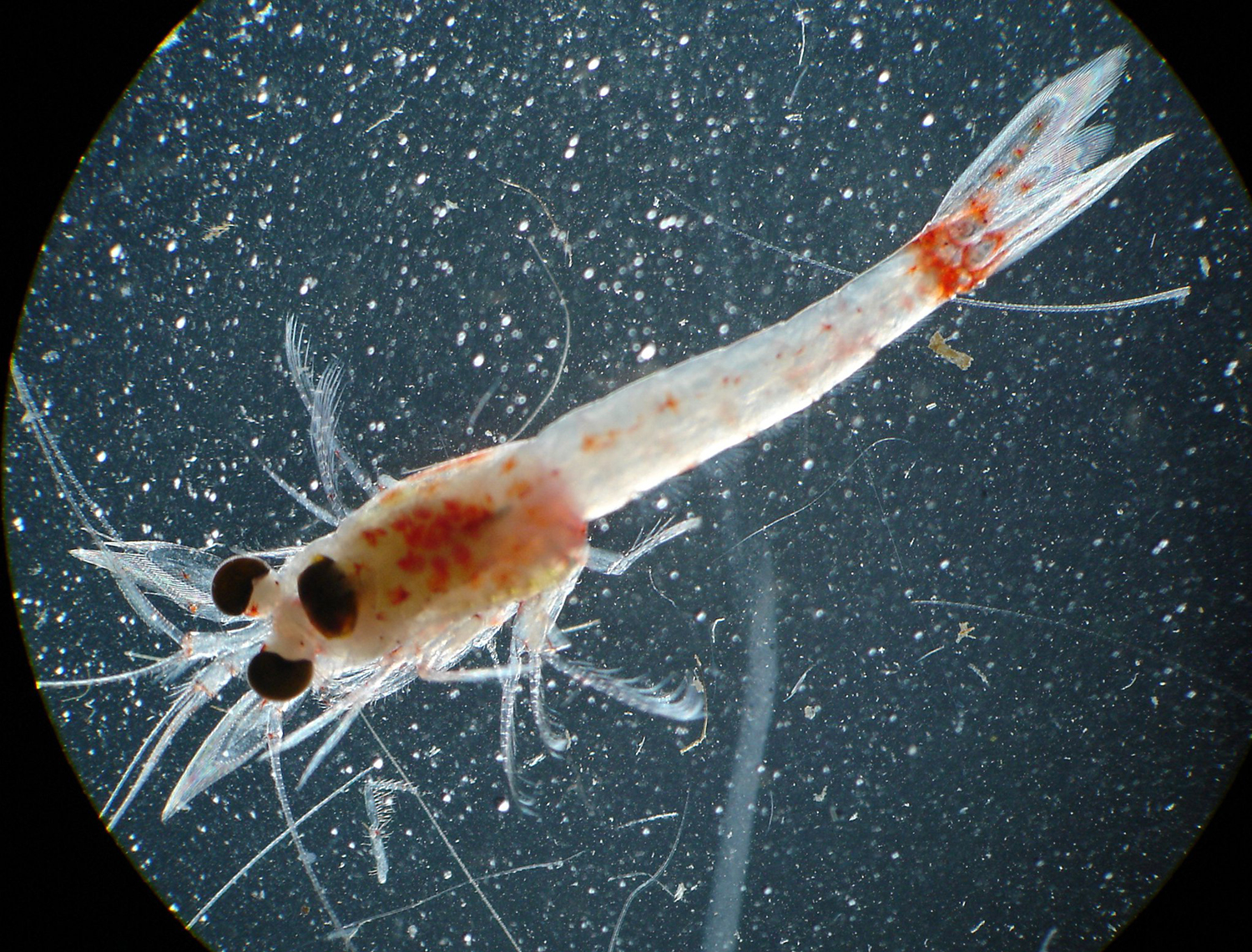
Zooplankton has been proposed as a sustainable source of feed ingredients for aquaculture since its nutritional compositions are reported to be comparable to fishmeal. The global productivity of zooplankton biomass typically produces hundreds of millions of tons, and their reproductive turnover rate is fast. Most of this large biomass is not used in commercial products, and only a tiny percentage is harvested, and there is a consensus belief that aquatic biomass that is not harvested and utilized is considered a wasted biological resource.
Among possible alternatives under investigation, many underutilized species of zooplankton with large biomass from lower trophic levels, such as mysids, could offer a relatively untapped potential novel ingredient to support the needs of the growing aquaculture industry. Mysid has a high calorific value and is considered an excellent experimental organism for various bio-assays due to its abundance and ease of culturing. This zooplankton is abundant in the aquatic environment and is documented to have a short reproductive cycle. Mysid species are vastly underutilized, and their utilization as feed could be vital for the aquaculture industry. The mysid shrimp is characterized by its high protein (52–75 percent dry matter) content and also a significant amount of total lipid and fatty acids.
In addition to their high nutritional quality, mysid is suitable for aquaculture as a live feed. Although information on its nutritional value and biological testing are not well documented relative to fishmeal replacement in shrimp diets, mysids are considered an alternative live food for the nursery culture of marine fish. And using zooplankton-based meals as a potential substitute for fishmeal in P. vannamei diets could be a promising alternative. Based on our intensive literature reviews, there is no published study on the feed value of mysid meal (MM) as a fishmeal replacement in shrimp diets.
This article – summarized from the original publication (Traifalgar, R.F.M. et al. 2024. Mysid meal as a dietary replacement for fishmeal in the diets of Pacific white shrimp Penaeus vannamei (Boone, 1931) postlarvae. Front. Sustain. Food Syst., 02 April 2024, Sec. Aquatic Foods, Volume 8 – 2024) – reports on a study to evaluate the feed value of mysid meal as an alternative ingredient for fishmeal on the growth, survival, feed utilization, biochemical composition, nutrient retention indices and survival of P. vannamei postlarvae.
Study setup
The study was conducted in an indoor, recirculating water system at the Multispecies Hatchery Complex of the University of the Philippines Visayas (UP Visayas), College of Fisheries and Ocean Sciences (CFOS)—Institute of Aquaculture (IA) in Miag-ao, Iloilo, Philippines. The experimental system included twenty 60-liter plastic tanks in a completely randomized design for a 60-day culture period.
Wild mysids were procured from local fishermen in Atabayan, Tigbauan, Iloilo, Philippines, and processed into meal for inclusion in experimental diets. Five experimental diets (37 percent crude protein) were formulated with modifications to satisfy the nutritional requirements of the shrimp postlarvae. The treatments consisted of five experimental diets with control (MM0), 25 (MM25), 50 (MM50), 75 (MM75), and 100 percent (MM100) mysid meal replacement of fishmeal by weight, respectively.
For detailed information on the experimental design and culture system; animal husbandry; data collection and analyses, refer to the original publication.
Point: There are no essential ingredients in aquaculture feeds
Results and discussion
This study is the first to document the nutritional utilization of mysid meal (MM) as a quality protein source in P. vannamei diets based on several biological performance indices and biochemical parameters. Amino acid (AA) analysis of mysid meal indicated a complete and well-balanced AA content with a nutritional value closely similar to or surpassing the AA composition of the P. vannamei muscle protein. Moreover, the essential amino acid (EAA) profile of MM satisfies the ideal dietary EAA requirement of penaeid shrimp. Most EAA content of mysid meal exhibits a higher chemical score closer to or above 100 percent. This indicates that these AAs present in mysid meal are sufficient to satisfy the EAA requirement of P. vannamei for optimum growth and development.
Based on its chemical score index (CSI), the most limiting AA of mysid meal is leucine (38.33 percent) followed by arginine (39.58 percent), implying that mysid meal can only supply these percentages of the total required by the P. vannamei and that the difference must be supplemented in the diet. Dietary supplementation of either natural or synthetic leucine will ensure that growth will be at the optimum and will not be limited with the deficiency of this essential amino acid.
Overall, mysid meal is a good-quality protein that can provide adequate EAAs to meet the requirement of P. vannamei to achieve optimum growth.
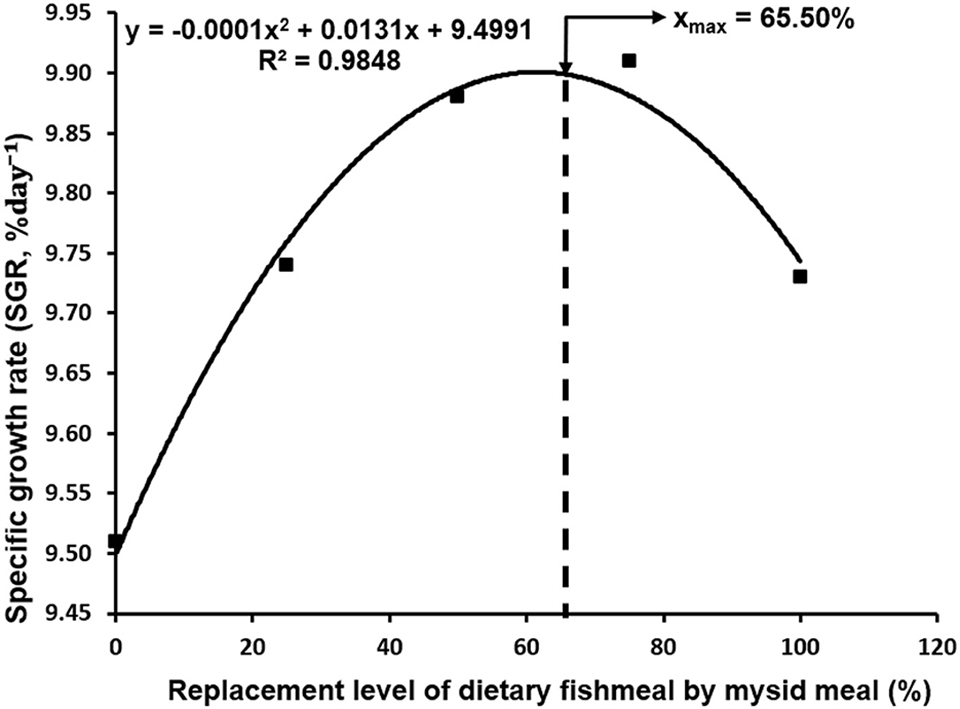
The growth performance indices of final body weight (FBW), percent weight gain (WG), and specific growth rate (SGR); the feed utilization efficiency parameters of feed conversion ratio (FCR) and protein efficiency ratio (PER); and survival of P. vannamei fed with mysid meal-based diets were similar in all treatment groups at the end of the feeding trial. Shrimp fed with complete replacement of fishmeal (MM100) showed similar growth performance with the control treatment (MM0), receiving the 100 percent fishmeal-based diet. However, the shrimp fed with increasing levels of mysid meal-based ingredients (MM25, MM50, and MM75) showed a similar trend with the MM100 treatment toward better growth performance and feed utilization. These results suggest that mysid meal can substitute up to 100 percent of the fishmeal, whose content accounted for 40 percent in the fishmeal-based control treatment, without causing any adverse effects on the biological performance of P. vannamei. This is the documentation of the complete substitution of fishmeal with mysid meal in P. vannamei diets.
The proximate whole-body composition analysis of P. vannamei indicated that the carcass protein, lipid, moisture and ash contents were unaffected by fishmeal’s replacement level with mysid meal. These findings suggest that mysid meal supplies well-balanced and readily available nutrients and that accelerated growth does not impair the composition of the muscle tissue. However, in the current study, dietary mysid meal replacement levels significantly influenced body protein and lipid retention. Protein and lipid retention in treatments fed with mysid meal-based diets were significantly higher than those groups receiving 100 percent fishmeal-based diets. These high protein and lipid retention must have also contributed to the better growth response in shrimp fed with MM75.
Counterpoint: Marine ingredients are stable in volume, strategic in aquaculture nutrition
Protein retention (PR) is considered an important index for the suboptimal supply and utilization of amino acids. In this study, the PR values varied between 18.68 and 22.70 percent, which was relatively high compared to values reported by other researchers. The significant enhancement of protein retention could be attributed to the better AA profile of mysid meal, and the improvement of PR can be linked with the enhancement of protein synthesis. In crustaceans, it has been observed that a lower PR is associated with a higher rate of protein catabolism, decreased feed, and inefficient feed utilization.
The relatively high survival and no significant differences observed in all dietary treatments indicate that the experimental animals are healthy and in good nutritional condition, suggesting that mysid meal is a suitable dietary ingredient to satisfy the nutritional requirement of the white shrimp. The significant growth improvement of P. vannamei can also be attributed to the high-quality nutrient composition of mysid meal with high crude protein content comparable to fishmeal and complete AA profile. The nutritional value of mysid meal as a complete substitution of fishmeal to support the growth and development of P. vannamei is considered unprecedented. Our results suggest that mysid meal could be a viable alternative for fishmeal in P. vannamei diets, and this feed ingredient could minimize the pressure on capturing dwindling natural fish stocks for aquaculture feed use.
Perspectives
This study concludes that mysid meal can successfully replace up to 100 percent of the fishmeal (40 percent in the control feed) with no deleterious effects on survival, growth performance, feed utilization, biochemical composition, and nutrient retention of the shrimp. The dietary mysid meal could also elicit growth-promoting effects if utilized at 65.50 percent replacement of fishmeal in P. vannamei post-larval diets.
Now that you've reached the end of the article ...
… please consider supporting GSA’s mission to advance responsible seafood practices through education, advocacy and third-party assurances. The Advocate aims to document the evolution of responsible seafood practices and share the expansive knowledge of our vast network of contributors.
By becoming a Global Seafood Alliance member, you’re ensuring that all of the pre-competitive work we do through member benefits, resources and events can continue. Individual membership costs just $50 a year.
Not a GSA member? Join us.
Author
-
Rex Ferdinand M. Traifalgar, Ph.D.
Corresponding author
Institute of Aquaculture, College of Fisheries and Ocean Sciences, University of the Philippines Visayas, Miag-ao, Iloilo, Philippines
Tagged With
Related Posts
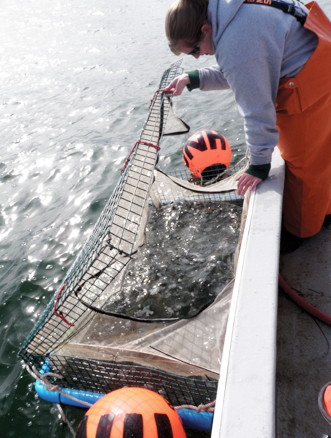
Health & Welfare
Flatfish conditioning for stock enhancement
Acclimation cages, the most implemented conditioning strategy for flatfish, are inexpensive and effective, but require site-specific adjustment. Live or lifelike diets show great potential in rearing stocked flatfish.
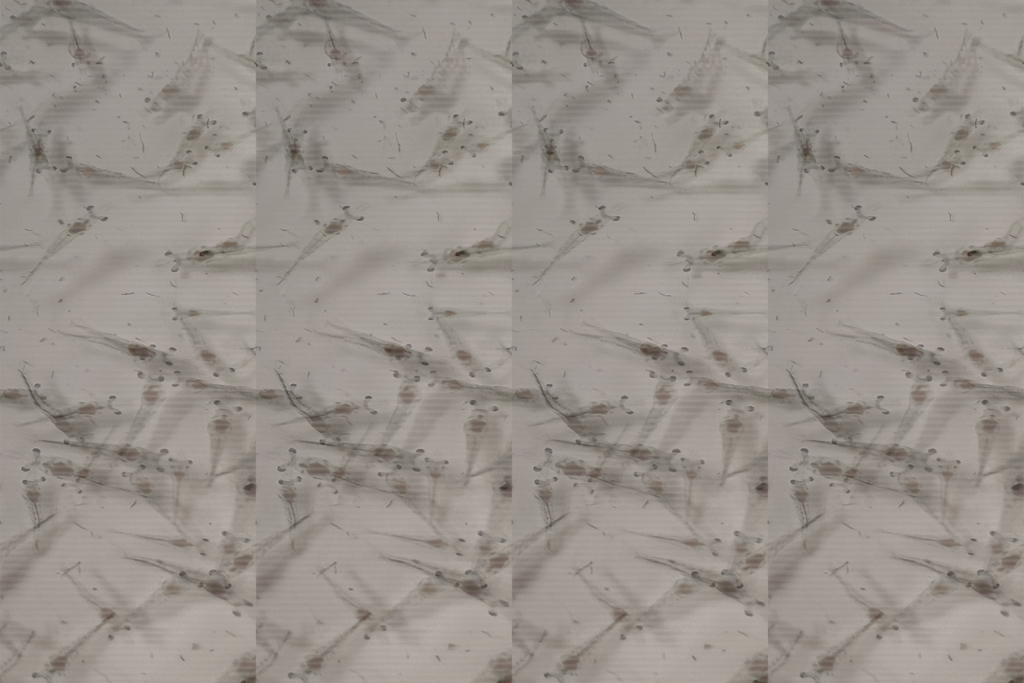
Health & Welfare
Analyzing transmission dynamics of White Spot Syndrome Virus in Pacific white shrimp
An individual infection model identified characteristics of an epidemic and investigated the role of environmental components in its transmission.
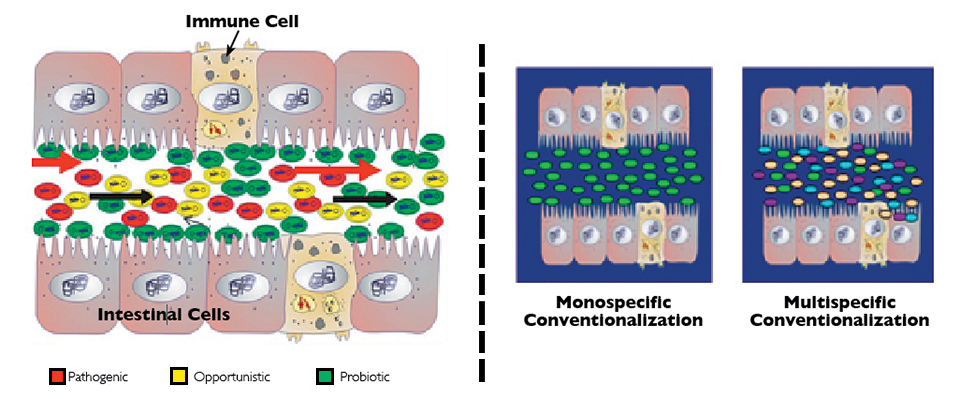
Health & Welfare
Domestication of gut microbiota can improve shrimp aquaculture
In studies, bacteria and yeasts isolated from the native microbiota of wild shrimp at larval, juvenile and adult life stages were administered to early-stage shrimp via the culture water.
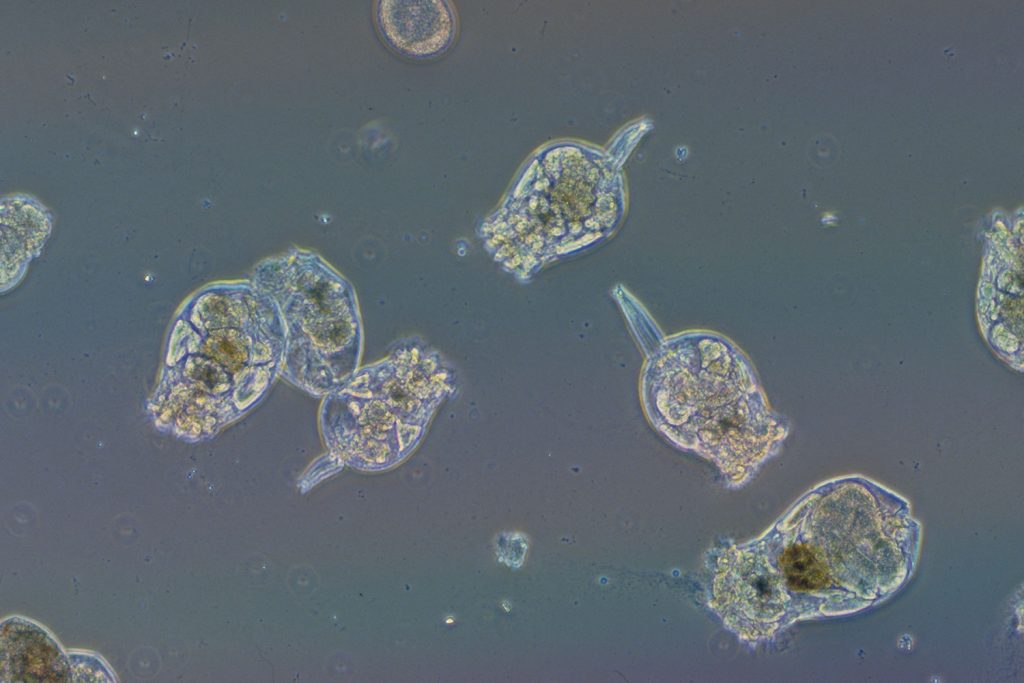
Aquafeeds
Finding value in feed size, right down to the rotifers
To raise yellowtail and bluefin tuna, a progressively larger feed is required as the fish grow. Japanese researchers are looking to fill the gaps.



